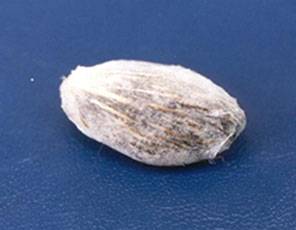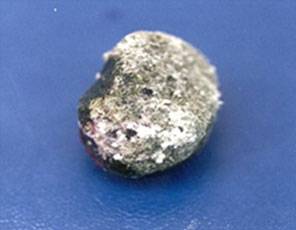Biology and Symptom
Seeds (embryo and kernel) are infected by several species of fungi and also bacteria. The infected seeds are either rotten or failed to germinate. The plumule and radicle of some germinated seeds are black. The growth of infected geminated seeds is slower than healthy seeds. Some infected seeds are covered with white mycelium or white mycelium with greenish/blackish/yellowish spores depending on causal pathogen.


Causal
Several species of fungi of difference genus have been isolated and related to brown germ such as Aspergillus, Pennicillium, Trichoderma, Fusarium, Chaetomium, Rhizopus, Schizophyllum commune and several types of bacteria. Infection is due to broken, dirty and contaminated seeds. Poor storage and high moisture enhance the risk of infection
Disease Management and Control
The disease can be managed with good practice during preparation of seed. Broken and dirty should be removed. Infected seeds should be discarded and destroyed immediately. Moisture content should be maintained below 17 % (dry weight). Seeds can be treated with fungicides by soaking in a solution of 0.2% thiram for a few minutes. If more than 2% of the seeds are infected, soak the seeds in 0.1 % mancozeb (80%) with 0.05% benomyl (50%) for 15 minutes and leave to dry.
